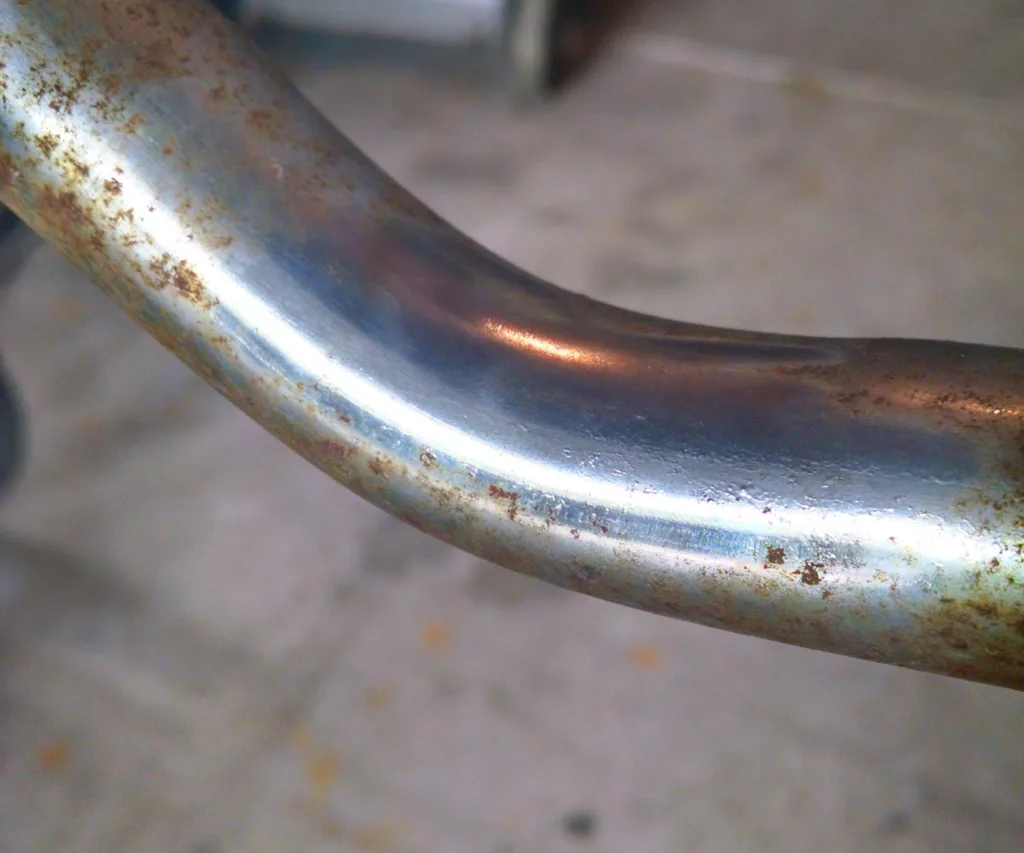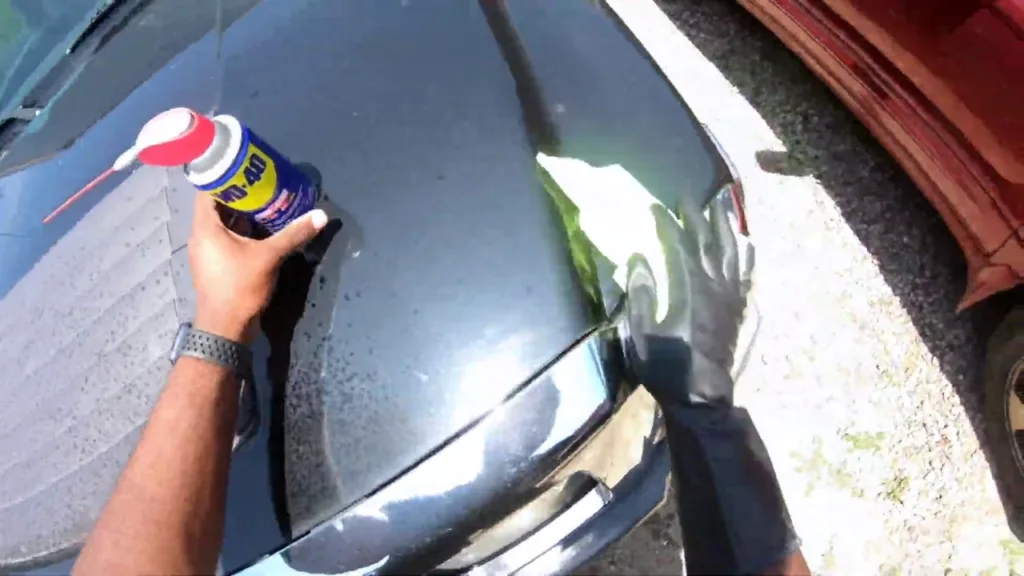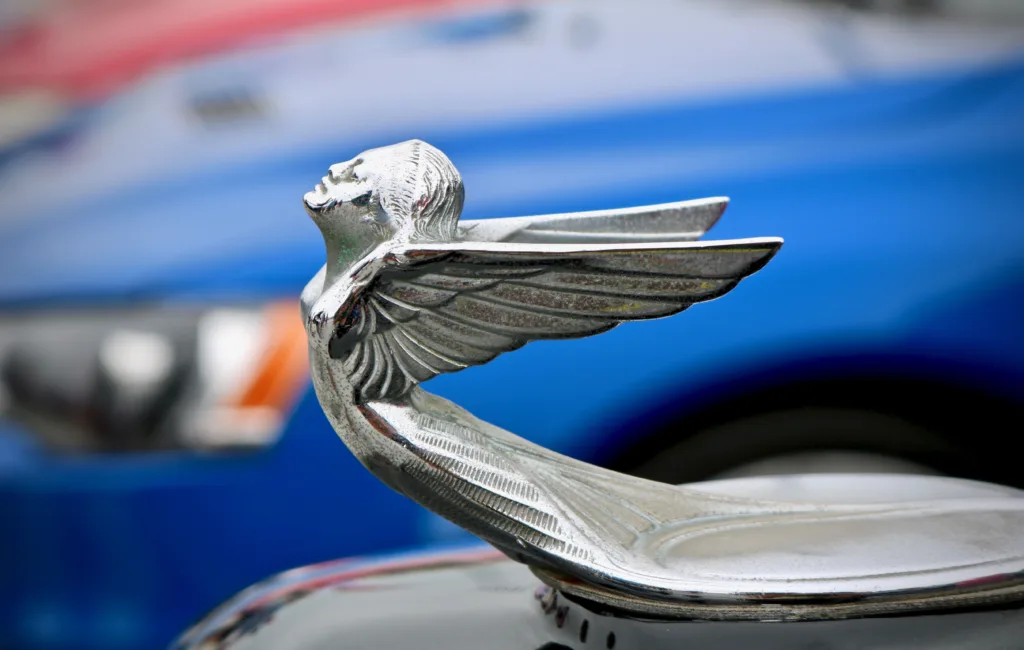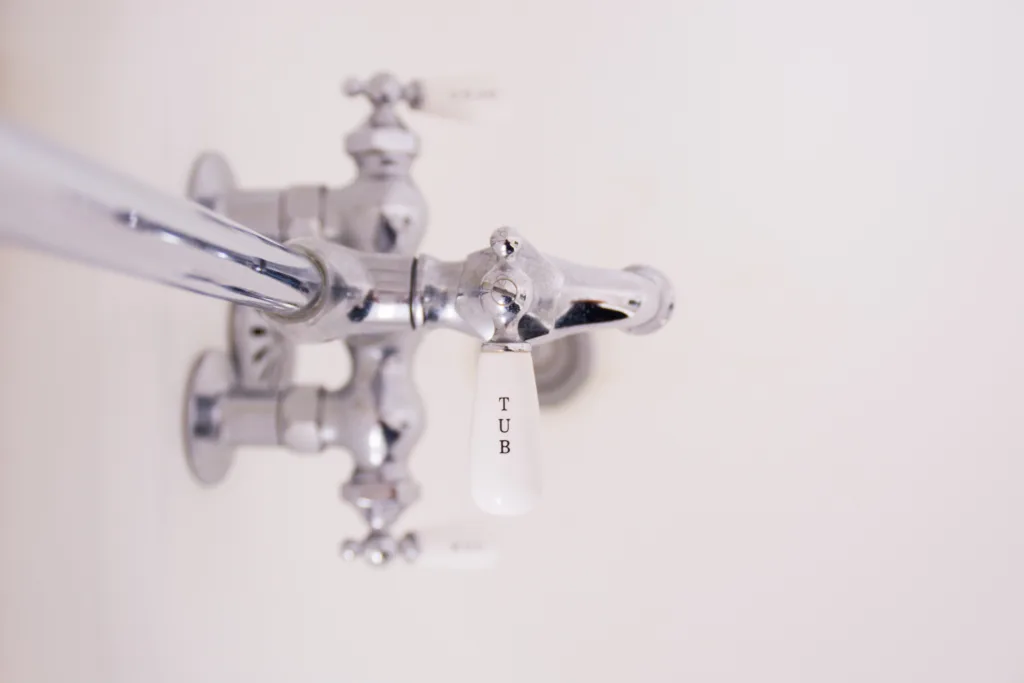Chrome is a popular metal used in both decorative and industrial purposes due to its high level of lustre and corrosion-resistant properties. However, despite its many benefits, there is one question that many people ask: does chrome rust?
The short answer is yes, chrome can rust, but it is less lkely to do so compared to other metals. Chrome plating is a thin layer of chromium that is electroplated onto a metal surface. This process creates a protective barrier that prevents rust from forming on the metal underneath.
However, if the chrome plating is damaged from scratching or dents, and the metal underneath comes in contact with moisture and oxygen in the air, rust can occur. This is because the protective barrier created by the chrome plating has been compromised, leaving the metal vulnerable to corrosion.
The good news is that if you notice rust on your chrome bathroom fixtures, you don’t have to live with those unsightly stains forever. There are several effective ways to remove rust from chrome surfaces and restore them to their former shine.
One of the most effective methods is the aluminum foil method. To do this, remove all dirt and debris from the surface of the chrome using a soft sponge and clean water. Dip aluminum foil into clean water and use it to gently rub the rust stains on the chrome surface. The chemical reaction created during this cleaning process will help to remove the rust and restore the shine to the chrome.
Another effective method is to use a commercial rust remover specifically designed for chrome surfaces. Be sure to follow the instructions carefully and use protective gloves and goggles when using these products.
Prevention is always better than a cure, so to minimize the risk of rust forming on your chrome surfaces, it’s important to take care when cleaning them. Avoid using abrasive cleaners or scrubbers that can scratch the chrome surface and damage the protective layer. Instead, use a soft cloth or sponge and a mild cleaning solution.
While chrome is less likely to rust compared to other metals, it can still happen if the protective layer is damaged. However, with the right cleaning techniques and preventative measures, you can keep your chrome surfaces looking shiny and rust-free for years to come.
Preventing Rust on Chrome
Chrome is a popular material used in various applications due to its durability and shine. However, chrome can rust if not properly maintained. Here are some tips on how to keep chrome from rusting:
1. Clean regularly: Dirt, grime, and other contaminants can accumulate on the surface of chrome, leading to rusting. Clean your chrome regularly using a mild soap and water solution to remove any dirt and debris.
2. Dry thoroughly: After cleaning your chrome, make sure to dry it thoroughly using a soft cloth or towel. Water can cause rust to form, so it’s essential to remove all moisture from the surface.
3. Use rust inhibitors: There are several rust inhibitors aailable in the market that can help protect your chrome from rusting. Apply a rust inhibitor spray or solution on the surface of the chrome to prevent rust from forming.
4. Wax or polish the chrome: Applying a coat of wax or polish on the surface of the chrome can help protect it from rusting. The wax or polish creates a barrier between the chrome and the elements, preventing rust from forming.
5. Store your chrome properly: If you have chrome items that are not in use, store them in a dry and cool place. Avoid storing them in damp or humid areas as this can cause rust to form.
By following these tips, you can keep your chrome from rusting and maintain its shine and durability for years to come.

Is Chrome Resistant to Rust?
Chrome is resistant to rust. This is because chrome is an alloy of chromium, which has a natural ability to resist corrosion. When exposed to oxygen, chromium reacts to form a thin, invisible layer of oxide on its surface, which acts as a barrier against frther corrosion. This process is called passivation, and it gives chrome its characteristic shine and durability. As a result, chrome is commonly used in applications where resistance to rust and corrosion is important, such as in automotive parts, kitchen appliances, and bathroom fixtures. However, it’s worth noting that chrome can still corrode if it’s exposed to certain chemicals or if the surface is scratched or damaged.
Comparing Chrome and Stainless Steel
Both chrome and stainless steel have their own distinct advantages and disadvantages, so it relly depends on the specific application and personal preference.
Stainless steel is known for its durability and corrosion resistance, making it a great option for products that may be exposed to harsh environments or outdoor elements. It is also typically more expensive than chrome plating, but it will last longer and require less maintenance.
On the other hand, chrome plating is known for its high shine and attractive appearance. It is also generally less expensive than stainless steel and can make the product lighter in weight. However, chrome plating is not as durable as stainless steel and may require more maintenance to prevent rust and corrosion.
Ultimately, the decision between chrome and stainless steel will depend on factors such as the intended use of the product, budget, and personal preferences in terms of appearance and maintenance requirements.
The Causes of Rust on Chrome
Rust on chrome is caused by the corrosion of the metal underneath the chrome plating. When the chrome plating is scratched or dented, the metal underneath is exposed to moisture and oxygen in the air. This exposure causes a chemical reaction that leads to the formation of rust. The moisture in the air reacts with the metal to create iron oxide, which is the reddish-brown substance commonly known as rust. Once rust forms, it can continue to spread and eat away at the metal, causing furter damage if left untreated. Therefore, it’s important to address rust on chrome as soon as possible to prevent further corrosion and damage.
The Effectiveness of WD-40 in Protecting Chrome
WD-40 Multi-Use Product is an effective solution for protecting chrome surfaces. Its unique formula creates a protective barrier that helps prevent rust and corrosion from forming on chrome surfaces. Additionally, WD-40 Multi-Use Product can be used to shine and polish chrome, leaving it lookng clean and new. Simply apply a small amount of the product to a clean cloth and gently rub it onto the chrome surface. The result will be a shiny, protected surface that is resistant to the damaging effects of moisture and other environmental factors. Whether you are looking to maintain the appearance of your car’s chrome trim or protect your motorcycle’s chrome pipes, WD-40 Multi-Use Product is a reliable solution that can help you achieve your goals.

Waterproofing Chrome
Chrome in and of itself is not a waterproof material, as it is a metal and can be subject to corrosion and rust when exposed to moisture over time. However, there are ways to make chrome-plated items more water-resistant. One option is to apply a clear coat or sealant over the chrome plating, which can help to create a barrier between the metal and the water. This can be done using a spray-on coating or by applying a liquid sealant with a brush or roller. Another option is to use a wax or polish specifically designed for chrome, which can help to repel water and prevent it from penetrating the surface of the metal. However, it’s important to note that even with these precautions, chrome-plated items should not be fully submerged in water or left in wet environments for extended periods of time, as this can still lead to damage over time.
Lifespan of Google Chrome
Chrome, also known as chromium, is a popular metal coating used to improve the appearance and durability of various materials. The lifespan of chrome largely depends on the quality of the plating process, the conditions it is exposed to, and the thickness of the chrome layer.
In general, top-quality hard chrome plating can last for many years, even in harsh conditions. This type of chrome coating is commonly used on industrial equipment, automotive parts, and hydraulic cylinders, and can withstand high temperatures, corrosive chemicals, and heavy wear and tear.
In non-wear situations, such as decorative chrome plating on household items or furniture, the lifespan of the chrome can be even longer, lasting for decades or even a lifetime. However, if the chrome is exposed to harsh chemicals or abrasive materials, or if it is not properly maintained or cleaned, it may begin to degrade or corrode over time.
The lifespan of chrome can vary depending on the specific application and conditions it is exposed to. Proper maintenance and care, aong with high-quality plating processes, can help to ensure that your chrome will last for many years of reliable use.
The Rate of Rusting in Chrome
Chrome itself does not rust, as it is a type of plating that is applied to a metal surface for its protective and decorative properties. However, if the chrome plating is damaged or worn down, the underlying metal can start to rust. The speed at which this happens depends on a variety of factors, including the quality of the chrome plating, the type of metal underneath, and the conditions in which the metal is exposed to. In general, high-quality chrome plating can provie excellent protection against rust for many years, even in harsh environments. However, if the chrome is scratched or damaged, it can start to rust relatively quickly, especially in areas with high humidity or exposure to saltwater. Regular maintenance and care can help to prevent rust from forming on chrome-plated surfaces, and prompt repair of any damage can help to ensure long-lasting protection.
The Best Metal That Does Not Rust
The best metal not to rust depends on the specific application, but here are some commonly used metals that do not rust.
Aluminium is a highly abundant and versatile metal that does not rust since it contins no iron, except in some specific alloys. It is frequently used in outdoor construction and transportation industries.
Copper is another metal that does not rust and has excellent conductivity and malleability. It is commonly used for electrical applications, plumbing, and roofing.
Brass and bronze are alloys of copper that contain zinc and tin, respectively. Both metals do not rust and have an attractive appearance, making them popular for decorative purposes and musical instruments.
Galvanized steel is steel that has been coated with a layer of zinc, which prevents rusting. It is commonly used in outdoor construction and industrial applications.
Stainless steel is a highly durable and corrosion-resistant alloy that contains chromium. It is commonly used in the food industry, medical equipment, and high-end kitchen appliances.
It is essential to consider the specific application and environmental conditions when choosing the best metal not to rust. Each metal has its own unique properties and advantages, and selecting the right one can ensure long-term durability and performance.

Identifying Chrome Metal
There are a few ways to determine if a metal is chrome or not. One of the most obvious ways is to look for a bright and reflective surface. Chrome has a distinct shine that is often compared to that of a mirror. However, this method is not foolproof since oher metals like polished aluminum or nickel can have a similar appearance.
Another way to distinguish chrome from other metals is to perform a simple acid test. Chrome is resistant to most acids, so if you apply a weak acid like vinegar or lemon juice to the surface and it does not react, then it is likely chrome. However, this method can damage the metal and should only be done on a small and inconspicuous area.
One of the more reliable ways to determine if a metal is chrome is to use a magnet. Chrome is not magnetic, so if a magnet does not stick to the metal, then it is likely chrome. However, if the metal is stainless steel, this test will not work since stainless steel is also non-magnetic.
Determining if a metal is chrome requires a combination of visual examination, acid tests, and magnet tests. When in doubt, it is always best to consult with a professional or use specialized equipment to get an accurate reading.
Cleaning Chrome
Cleaning chrome is a relatively easy process that can be accomplished with a few simple steps. To begin, you will need some vinegar, water, and a scrubbing tool. You can mix a 1:1 ratio of vinegar and water in a bowl or spray bottle. Next, use a soft sponge or cloth to apply the solution to the surface of the chrome fixture. Scrub the surface gently, being careful not to scratch the chrome. If you encounter any stubborn stains or spots, you can add a litle baking soda to the mixture to give it some extra strength.
After scrubbing the chrome, rinse off the surface with clean water and dry it with a soft cloth. This will help prevent water stains from forming on the chrome. Once your chrome is clean and dry, you may want to consider polishing it to give it a nice shine. There are many chrome polish products available on the market that can help you achieve this. Simply follow the instructions on the product you choose to use, and your chrome will be looking like new in no time.
Cleaning chrome is a fairly simple process that just requires a few basic items and some elbow grease. With a little bit of effort, you can keep your chrome fixtures looking shiny and new for years to come.
Comparing Chrome and Aluminium
When it comes to choosing betwen chrome and aluminum, it really depends on your specific needs and preferences. Chrome is known for its shiny, reflective surface that adds a sleek and modern look to any furniture piece. It is also highly durable and resistant to corrosion, making it ideal for furniture that will be exposed to moisture or harsh weather conditions.
Aluminum, on the other hand, is a more lightweight and cost-effective option compared to chrome. It is also highly resistant to corrosion and can withstand exposure to moisture and harsh weather conditions. However, it may not be as durable as chrome and may be more prone to scratches and dents.
Ultimately, the choice between chrome and aluminum will depend on your personal taste and the specific requirements of your furniture. If you are looking for a high-end, durable finish that will withstand the test of time, chrome may be the better option. However, if you are on a budget and need a lightweight and corrosion-resistant finish, aluminum may be a more practical choice.
The Potential Hazards of Using Chrome
Chrome is a highly durable metal that is resistant to corrosion and tarnishing. However, certain substances and conditions can still cuse damage to chrome fixtures. For example, exposure to moisture and humidity over time can lead to the development of rust or tarnishing on chrome surfaces. Additionally, harsh chemicals such as bleach or ammonia can cause discoloration or pitting on chrome, as can abrasive cleaning tools like steel wool or scouring pads. Soap scum, hard water deposits, and mineral buildup can also cause staining or etching on chrome surfaces if left untreated. To protect your chrome fixtures from damage, it’s important to avoid using harsh chemicals, abrasive tools, or allowing moisture to accumulate on chrome surfaces. Regular cleaning with mild soap and water, followed by a gentle buff with a soft cloth, can help keep your chrome fixtures looking shiny and new for years to come.

Does Vinegar Remove Rust From Chrome?
Vinegar can be used to remove rust from chrome. The acidity in vinegar helps to break down the rust and dissolve it away. To use vinegar to remove rust from chrome, you will need to mix equal parts of distilled white vinegar with water in a bowl. Then, dip a clean cloth into the mixture and use it to scrub the rust off of your chrome surface. Be sure to let the solution sit on the rust for a few minutes befoe scrubbing to allow it time to work. You may need to repeat this process a few times depending on how severe the rust is. vinegar is an effective and affordable way to remove rust from chrome surfaces.
Conclusion
Chrome plating is a popular choice for both decorative and industrial purposes due to its high level of lustre and corrosion resistance. While stainless steel may be more durable, chrome plating offers a shinier appearance and is often less expensive. However, it is important to note that rust can occur on chrome when the plating is damaged and the metal underneath comes in contact with moisture and oxygen in the air. Thankfully, there are ways to remove rust stains from chrome and prevent further damage. By uing the aluminum foil method or other effective cleaning techniques, you can restore the shine and protect your chrome from future rusting.
